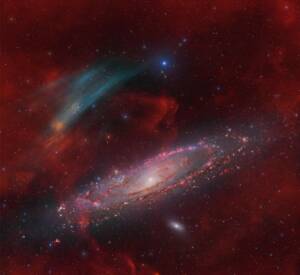
Discovery of the M31 [OIII] emission arc
Recently, a major discovery by an international team of amateur astronomers and scientists has become a huge online hit, and this new discovery is just located in one of the
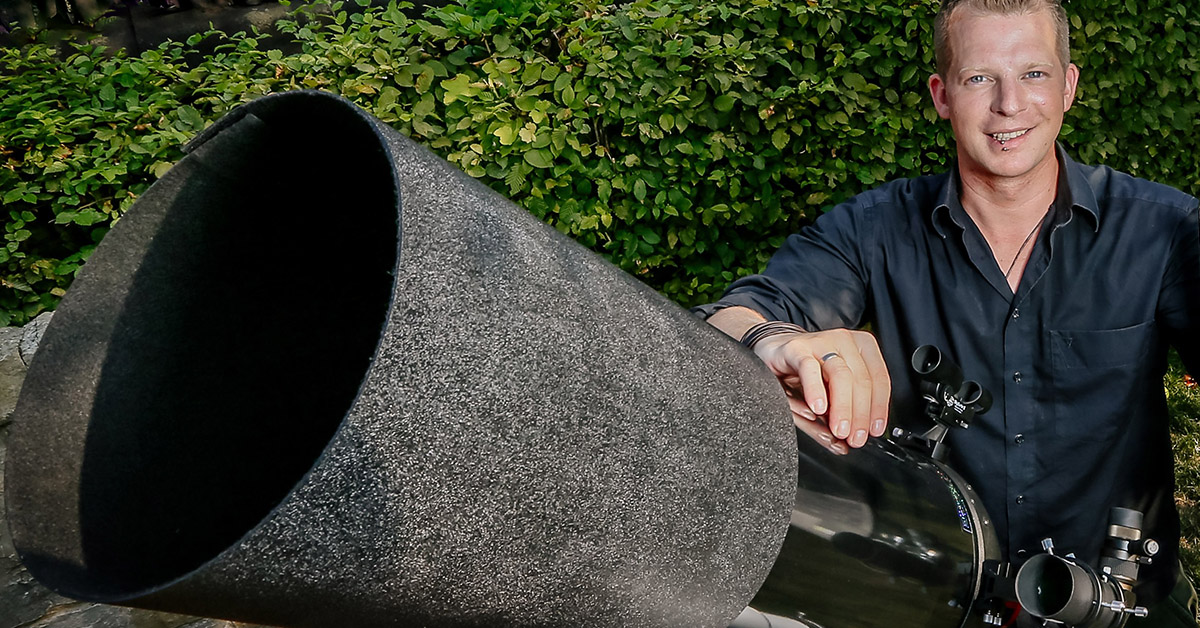
Patrick Bosse is the winner of ZWO 2020 ASIWEEK #01 and has brought us many extraordinary astronomy photos. To make our ZWOers know this excellent astrophotographer better, we make this interview. Let’s all take a look now.
Q1: At first, congratulation that your nice image wins #ASIWEEK. Can you introduce yourself to us?
Hi, I am Patrick 34 years old and live with my family in the middle of Germany. For some years I have been very interested in astrophotography. The versatility of this hobby is so exciting to me.
I love to use the telescope and the camera to bring things to light that the naked eye would never have thought it existed.
I have built my own little observatory for over a year now and it makes so much easier! A small dream has come true.
At the same time, I really like to chase the Milky Way with the DSLR. Being in unknown places alone at night taking pictures of beautiful landscapes with the Milky Way is incredible!
Q2: Can you tell why do you like astronomy? What does astronomy mean to you?
The fascination with astronomy goes back quite far. At a young age, I was given a small simple refractor by my parents. I remember how extremely impressive the view of the moon was. No flat disk but mountains, craters and valleys.
With the years and the youth, this topic has receded somewhat into the background.
But a trip to New Zealand in 2012 brought a turning point, a clear night in the international dark sky reserve that remains unforgotten. More stars than I could have ever imagined.
Since then astronomy has meant freedom for me. The unimaginable vastness and the objects that the universe produces in the most diverse forms make me want to experience more and to be able to show them in pictures.
ASI1600MM Cool + SW Esprit 80ED 20. That’s why I love my ASI1600MM Cool. Only 30 x 50 sec exposure hours Ha-OIII.
Q3: Do you still remember the first time you do astrophotography? How was your feeling then?
After I found many great amateur astrophotos on the internet I decided: I want that too!
So I bought my first DSLR in 2015. A Canon EOS 700D.
Without experience in cameras or image processing, I took my first wide-angle shots and was amazed at how many stars were visible in these 15 seconds. Orion as a small blurred red spot, hell yeah, that’s really fun!
Shortly after that followed the first telescope, a Skywatcher 150/750 PDS, an old eq6 and guiding. NGC 6992 was the first target. The excitement was really something special when the first 600 s recording was made.
One of the first astro images. Skywatcher 150/750 PDS + EOS 1000Da, 3 hours of integration.
Q4: What equipment do you use? Can you show us some images?
Main camera: 2 x ZWO ASI1600MM Cool
Planetary camera: ZWO ASI224MC
Allsky camera ( in progress): ZWO ASI120mm
Telescope: 2 x Skywatcher Esprit 80ED
10 ” f4 self-made Newton telescope
Celestron C9.25
Mount: Skywatcher EQ8 pro
Filter Wheel: 2 x ZWO 7 x 36mm EFW
Filter: Baader Filter
Guiding: OAG/ Lodestar
Current Setup
First Setup
Q5: What type of telescope is your favorite? Why?
I can’t commit myself. Almost all telescope types have their own advantages and disadvantages.
I like to use my different systems. A Schmidt-Cassegrain is real fun with moon and planets. The Newton with its super price-performance ratio for plenty of apertures and it´s fast. Or an APO refractor, small, handy, adjustable and extremely efficient in a double pack.
Q6: Which one do you prefer? Planetary imaging or deep-sky imaging?
I definitely prefer deep-sky photography, even though I always find taking pictures of the moon and planets exciting and enjoy trying them out.
Saturn
Fly to the moon
Q7: What’s the most difficult part of astrophotography for you?
The most difficult thing for me is not to go crazy in very long bad weather periods, you must know what I mean 😉
What remains the most difficult thing in astrophotography for me is still image editing. Getting an image the way I want it to be is sometimes a hard and tedious thing.
Q8: Have you ever traveled to a very dark place to do astrophotography? How was that like? Any picture taken in there?
yes, since I have astrophotography as a hobby, the holidays are usually planned to be there at the new moon, and if possible near dark places.
Tenerife and the west coast of the USA were already really great, but really impressive was the Milky Way during my honeymoon over Mauritius! For someone from Germany, it is quite extraordinary to see the galactic center above your head and not close to the horizon.
 EOS 6D modified 24mm panorama 15 Pictures x 15 sec f2.2
EOS 6D modified 24mm panorama 15 Pictures x 15 sec f2.2
Q9: As to your winning image Lion Nebula, would you please tell how did you capture it? Would you like to share with us some detailed camera settings?
First of all, I want to thank the ZWO team for making my lion Nebula the picture of the week. Just because it’s the picture I like so much myself.
The picture was one of the first I did with my Esprit / ASI1600MM Cool double setup.
The first camera took the H alpha shots, the second the OIII Data.
A very efficient way to get a lot of signals in the few clear nights that are available to us.
Ha 360 x 300 sec Unity Gain (139)
OIII 360 x 300 sec Unity Gain (139)
RGB each 60 x 180 sec were meant for the star colors but Bi Color stars looked good
Stacked in Astro Pixel Processor
Image editing in Photoshop
OIII Data
Halpha Data
Final Image
Q10: How do you like the ZWO camera that you used to take the winning image? And do you use any other ZWO products?
The ASI1600MM Cool surprises me again and again after 2 years of using it.
The really fine details and sensitivity that this mono sensor always brings to light is really impressive for me.
The ASI224mc is also fun for planetary recordings, due to good conditions I was able to take a great picture of Saturn despite its low position on the horizon.
ASIAIR is fun for my mobile Equipment.
I’ll probably try the ZWO EAF soon, you can hear a lot of good things about it.
That’s why I love my ASI1600MM Cool. Only 30 x 50 sec exposure of Halpha at unity gain
Q11: What do you think is the biggest advantage of ASI cameras? And what do you care most while buying an astro camera?
In my opinion, an Astro Camera needs a good price-performance ratio and exactly there I am really satisfied with the ZWO ASI
Q12: One last question: what’s your impression of ZWO? Do you have any feedback and suggestions that want to speak to us?
Keep up the good work. Stay innovative! Your cameras work great, your software (ASIAIR) makes more and more people happy and everything works together harmoniously!
I am looking forward to the future with a lot of new equipment from you 🙂

Recently, a major discovery by an international team of amateur astronomers and scientists has become a huge online hit, and this new discovery is just located in one of the
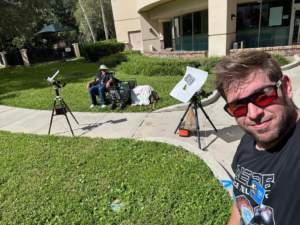
That 11-year-old boy staring at Horsehead Nebula photo would never have imagined… Decades later, he’d be capturing amazing deep-sky images from his Florida backyard! “ It was amazing to see

Hello,Sara Harvey,thanks for accepting our interview invitation. Congratulations on winning the ASIWEEK competition in week! Q1: At first, congratulation that your nice image won #ASIWEEK. Can you introduce yourself to
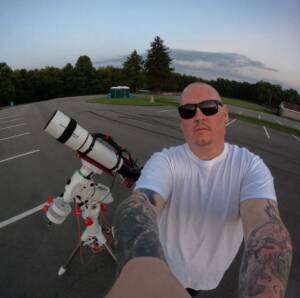
Astrophotography is more than just capturing images of the night sky—it’s a journey of discovery, patience, and creativity. For this passionate astrophotographer, what started as a chance encounter with a
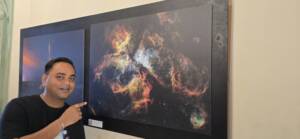
Taranjot Singh, an Indian origin Australian astrophotographer who is making waves on the international stage. Taranjot has been recognized as one of the Top 5 finalists in the prestigious Siena
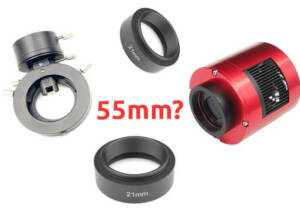
The back focal length is advised by telescope manufacturers. Since most telescopes have a 55mm back focal length, we are here to provide detailed instructions for all ASI cooled cameras.Please